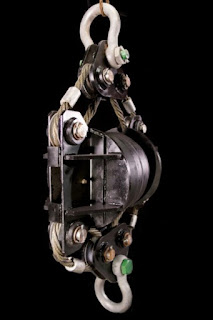One of the main problems faced by a construction contractor is choosing the right foundation equipment like pile driving hammers. And, when it comes to picking the right pile driving hammer, using a single piece of equipment for various tasks can certainly save money. However, how much room you’ll have to move it around the job site is, of course, another primary concern.
At Hydraulic Power Systems, we offer a full range of pile driving hammers. We can help you identify the most appropriate pile driving hammer to keep your project problem-free.
What is a Pile Driving hammer?
Pile driving hammers are the equipment used to drive piles into the soil and in some cases, underwater to build support for buildings or other structures like dams. Every hammer has a unique strength and working process. For instance, if you’re looking for equipment that works efficiently in the mining industry, a Hydraulic Auger is what you will need.
Different types of Pile Driving Hammer
Hydraulic Power System’s range of pile driving hammers can help your construction team to lower the labor costs and speed up the building process efficiently. Following are the most demanded and robust pile driving equipment on rentals in Missouri:
Vibratory Hammers
A vibratory hammer is used to drive sheet piles, pipes or other components into the soil by vertical vibrations. These hammers are easy to ship and can be used near residential areas without disturbing the people living in the surrounding areas. To keep your workers safe, we can provide radio remotes for operational efficacy from extended distances. These hammers can be used to both drive piles into and extract piles from the ground.
Caisson Hammers
Caisson hammers are useful for bridge pier foundations and dam construction projects. With a 90 degrees turning plate and power pack unit, these hammers drive caissons and then secure them as the mud/dirt/sediment settles cleanly back into place. At Hydraulic Power Systems, we offer 6 caisson hammer models to choose from.
Diesel Hammers
Diesel hammers are used to drive piles into a supporting soil layer. With its power and fuel efficiency, they can be used effectively in a wide range of environments.
Sheeting Hammers
If you’re looking for equipment that pushes or presses piles without using vibrations, you will need sheeting hammers. These hammers are an alternative to vibratory hammers and can effectively drive piles and/or caissons into the silt, mud, or other types of environments. All of our 7 models of sheeting hammers are suitable for the static pressing and extracting of sheet piles.
Excavator Mounted Hammers
With ergonomic design and powerful performance, the excavator-mounted hammers are useful to drive piles when the workspace is minimal in size or otherwise restricted. Along with a smooth and quiet performance, this equipment provides the fastest way to drive or extract various pile materials with minimal effort.
Pile driving equipment rentals in Missouri
Hydraulic Power Systems offer all kinds of pile driving equipment on rentals in Missouri. We are ready to provide you with everything you need for your construction projects. Reach out to us today for assistance in selecting the right equipment for your work. Call 816.221.4774 or visit the website - https://hydraulicpowersystems.com/





